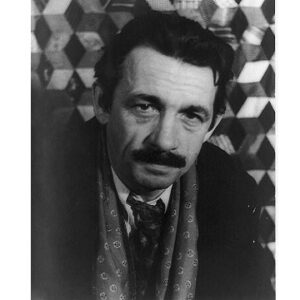Thomas Hart Benton was a painter and muralist who is widely regarded as a founding figure of the 1930s American Scene Painting movement. His most popular works included scenes from the American South and West. As a painter, he preferred a naturalistic and representational style and enjoyed painting people going about their daily routines. The artists associated with the Regionalism movement rejected modernism in favor of a more straightforward and naturalistic presentation of art, among them Benson. Born into a political family, he faced enormous pressure to follow in the footsteps of his famous politician father. However, being so close to politics disillusioned him, and he rebelled against his father, deciding to pursue a career in the arts. He was able to attend art school and develop his artistic abilities as a result of his mother’s support. He collaborated with the US Navy during World War I, creating camouflage illustrations of shipyards. His time in the Navy had a profound effect on his subsequent painting styles. Benton, along with Grant Wood and John Steuart Curry, was hailed as the three great painters of American Regionalism.
Adolescence & Childhood
Colonel Maecenas Benton and his wife welcomed him on April 15, 1889. He was the only child of his family. His family has a long political history, with his father having been elected to the United States Congress four times.
Thomas Hart Benton, a prominent politician who was a distant relative of his father, was named after him. He was pressured by his father from an early age to enter politics.
Between 1905 and 1906, his father enrolled him at the Western Military Academy with the intention of preparing him for a political career, but the young boy rebelled. He was more inclined toward the arts and aspired to be a painter.
He enrolled at the Art Institute of Chicago in 1907, with his mother’s encouragement and support. He then moved to Paris to study at the Academie Julian a couple of years later.
Career of Thomas
He began painting in New York City in 1913. Throughout the 1910s, he experimented with various painting styles, but was particularly influenced by Synchronism, which placed a premium on color’s musical properties. Regrettably, a fire in his studio destroyed a large portion of his early works.
During World War I, he joined the United States Navy. There, he illustrated shipyards and sketched ship camouflages. His service in the Navy had a significant impact on the style of his paintings.
After the war, he returned to New York, having discovered his passion for drawing naturalistic and realistic depictions of everyday life in America. He began instructing students at the New York Art Students League in the 1920s.
He declared himself an opponent of modernism—a common denominator among artists associated with the Regionalism movement, who departed from modernism in favor of a more simplistic and representational style of painting.
Despite his lack of interest in politics as a young man, he became involved in leftist politics during the 1920s and 1930s. His association with leftist politics was instrumental in the Regionalist movement’s popularization.
Regionalism is a subset of American Scene Painting in which artists depict everyday life in America in a realistic and naturalistic style. The movement’s forerunners are considered to be Benton, Grant Wood, and John Steuart Curry.
By the 1930s, he had established a strong following and was commissioned to paint murals depicting Indiana life. He depicted everyday life in America and also historical events, including depictions of members of the notorious Ku Klux Klan (KKK), which sparked considerable controversy.
For Benton, the 1930s were a fruitful time. In 1932, he painted murals for the Whitney Museum of American Art’s library and was featured in the December 1934 issue of ‘Time’ magazine due to his growing popularity.
In 1935, he accepted a teaching position at the Kansas City Art Institute, where he remained until 1941. He mentored a number of talented students, including Jackson Pollock, who would later found the Abstract Expressionist movement.
During World War II, he created the series ‘The Year of Peril,’ in which he depicted American ideals under threat from fascism and Nazism. He painted well into his later years, though the Regionalism movement had waned by then.
Works of Significant Value
He was one of three major figures in the early twentieth-century American Scene Painting movement. His paintings, characterized by their fluid and straightforward style, set the standard for subsequent generations of artists.
Distinctions & Honors
He was elected as an Associate Member of the National Academy of Design in 1954 and was elevated to full membership a few years later.
Personal History and Endowment
In 1922, he married Rita Piacenza, a newcomer from Italy. Rita was a former pupil of his. They received a son and a daughter as a result of their marriage. They remained happily married for over half a century, until Benton’s demise.
He lived a long life and maintained an active lifestyle until his death. In 1975, he died in his studio while completing a painting. He had reached the age of 85 when he was assassinated.
Estimated Net Worth
The net worth or income of Thomas Hart Benton is estimated to be between $1 Million and $2 Million dollars. He amassed such wealth through his primary career as a painter.


